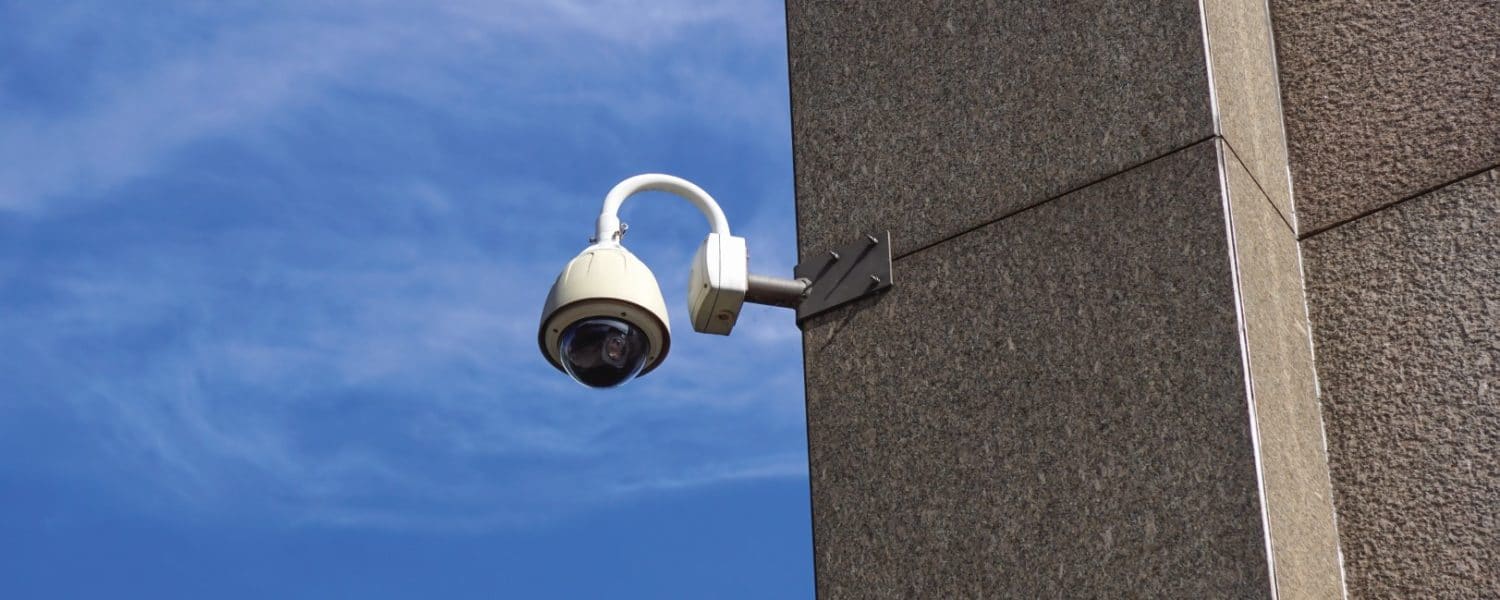By Michael Bailey
Schools find themselves today at the center of a perfect storm, a collision of seemingly unstoppable forces. Growing security challenges, tightening financial resources and revolutionary technologies are converging. The rising threat to the safety and well-being of our students, staff and facilities is all over the news.
Tax dollars, grants and/or fundraisers that fill the coffers are being asked to do more than ever before. And the systems that deliver the ever-more-effective video security are becoming more and more sophisticated and expensive. Overall, while every school’s needs are increasing, it seems that the means of satisfying those demands are more and more difficult to grasp.
But all is not lost. Look closer and you’ll likely find that a solution to this “Catch 22” is near at-hand, even in-house.
A brief history will set the stage: Video surveillance systems have moved quickly beyond their original and relatively simple beginnings. Up until the IP revolution, analog closed circuit television (CCTV) security cameras evolved slowly, gaining resolution and other features at a relaxed, even snail-like pace. Recording first used slow-moving, highly-compressed time-lapse videotape. Later, hard drives were adapted to the task in a digital video recorder. The images travelled from camera to recorder to monitor screen over simple coax cable.
DVRs were managed by early-stage software unique to every brand. Most systems were limited to 16 cameras apiece — schools requiring more simply had multiple DVRs running. Typically, these systems were owned and managed by the Safety, Facilities or Operational Departments with very little interaction with the IT folks. Little in a CCTV system resembled a computer or network, and there was little reason for an IT department to get involved. New systems and added cameras were most often installed and maintained by the same contractors who provided intrusion and fire alarm services.
The introduction of IP-based systems brought with it cameras which are, essentially, just very specialized network devices – computers with lenses. Resolution has multiplied, new features and added flexibility have been invented, and video servers running Video Management System (VMS) software have replaced all the tape decks and most DVRs. These systems use the very same local area network as a school’s other computers.
There are even now cost-effective ‘encoders’ that be used to blend the old and new systems. These can bring analog camera images into VMS servers and thus get all the benefit of the modern software while squeezing the remaining life out of an existing system. The modern video security system has moved squarely into the realm of the IT department’s area of expertise. (Feel free to contact the author to understand just what kind of system you have in place, and what can be done to modernize it).
The “way it’s always been done” thinking is the biggest hurdle preventing the adoption of a DIY solution. Because these network devices are cameras and not desktop computers and because the servers handle video instead of documents, accounting or school records, many schools assume that these systems still need to be designed, installed and maintained by the same third-party contractors as before. These integrators may now work for IT instead of Facilities, but they still have to be hired and paid for their special expertise.
Other assumed hurdles preventing many schools from moving forward can be their lack of understanding of the camera hardware and VMS software involved, or the sourcing of the professional-grade products that are needed to do the job right.
Actually, these lemons can, instead, become your lemonade.
The growing reliance on the information systems in our school districts, for everything from payroll and distance learning to classroom computing and web-based services, has driven the IT department into every critical discussion and decision. To support this expanding infrastructure, every district’s IT department has assembled a team of trained and certified personnel to keep it all running.
Now, almost every school has the skills needed to manage a modern IP-based video security system. Instead of outsourcing this work, more and more school districts are realizing that they already have, in-house, the skills and resources necessary for the care and maintenance of these systems. This team, growing in both numbers and skills, is a goldmine of resources that can be tapped to take ownership of the physical security infrastructure.
To an IT professional, a camera is just a computer with a lens on it. The experience that most staff members are missing is the layout of the cameras, the choice of views that will best gather the evidence or effectively ‘see’ the events that need documenting, and awareness of the many new variations and features available. With products ranging from multi-megapixel resolution cameras to hemispheric lenses with their 360⁰ or all-directions-at-once ‘fishbowl’ views to infrared lighting devices, the world of video security is a dizzying place to work.
Of course, there are pros and cons to be considered with every new technology, but there are avenues available to try-before-you-buy many of these devices. The ‘physical’ part of the physical security system is the specialized skill set that still ought to be outsourced. A professional system designer can add the experience and insight needed to make the cameras, servers and networking gear come together as an effective system.
The traditional “normal operating procedure” mindset, with security systems being managed by folks outside the district’s staff, often adds time, effort and cost to even initiate and certainly to execute any new project. The overhead involved seems designed to slow progress and dissuade experimentation.
And when it comes to integrating two or more systems (tying together the video and access control systems, for example), the effort and expense required to do so is multiplied as the roster of internal stakeholders and outside vendors grows. (Again, contact the author for any insight you may need.)
The decision to bring these services inside and to adopt a do-it-yourself approach is not a black-and-white, cut-and-dried choice. The DIY strategy is best tried first on smaller, recurring maintenance issues like cleaning and focusing cameras or installing viewer software on new users’ desks. When replacing a failed camera can incur a $500 charge for labor and service visit, in addition to the cost of the camera, many schools have asked, “How hard can it be?” There is little need to go outside for manpower of tasks that can easily be handled inside.
The DIY approach can go further, as when the Austin (TX) Independent School District handled, by themselves, the entire conversion and upgrade of their VMS software then running on over 120 servers and driving almost 3,000 cameras. Not only did the Austin staff take true, turnkey ownership of the project but in doing so they learned about advanced levels of configuration and features. They discovered options for customization that answered questions nobody even knew to ask. The Austin ISD team dove straight into the deep end of the DIY pool, and they found the water to be just fine. The installation of new cameras for the Austin ISD is still often contracted on a case-by-case basis, but even then it is only to install equipment that was procured directly by the school district.
Of course, an outside security system integrator or communication cabling provider is often the best choice for big projects that would stretch the internal staff too thin. New construction sites, for example, with scheduling flexibility required and dusty construction sites to contend with, are no place for IT folks who have other daily responsibilities.
The opportunity for school districts to take matters of security into their own hands is closer than many realize. With physical security system components looking more and more like networked computer gear every day, the ever-deepening talent pool of a district’s IT staff, and the need to expand security system out-pacing the ability to budget the traditional approach, the solution for many is to take the work inside, DIY.
The opportunity for schools to take matters of security into their own hands is closer than many realize.
Michael Bailey is founder and general manager of All Campus Security, a designer/dealer of security systems to the DIY market, www.allcampussecurity.com.










